The history of the United States of America is full of stories and facts from a wide diversity of cultures and peoples, but its foundations were built far before anyone attempted to make this part of North America a cohesive country. The Native American people lived across the land for thousands of years before others appeared on the shores, though their history and importance are sometimes brushed over in standard education.
Too many stereotypes and misconceptions exist about the American Indians who live across the land. Today, many people still do not understand who these people are, how they contributed to the history and their role in today’s world.
Native American Heritage Month invites all of us to learn, explore, and experience the amazing history, culture, and diversity of the tribes and individuals who were here from the beginning and still live here today. Also, Native American Heritage Month gives the tribal people from all nations the opportunity to celebrate their cultures and share them with others.
Why Do We Celebrate Native American Heritage Month?
For non-native people who now live in the United States of America, it is always important to understand cultures and civilizations outside our own. Too many people get their ideas of Native Americans from Hollywood movies, old TV shows, cartoons, and their own prejudices. Some people are not even aware that American Indians still exist, that they come from hundreds of different nations with their own cultures, histories, languages, and more, or that they were persecuted far beyond the earliest days of national “discovery” and Western expansion.
Native American Heritage Month is set aside every year to help both children and adults move beyond the stereotypes and the glamorized depictions in movies and other media. It is an opportunity not only to learn about how tribal people exist today but also all of the amazing accomplishments and contributions they made to the early days and current times in our country.
Early Education is Not Enough
From a young age, children in the USA are now taught that Native American people lived on the land for thousands of years before any explorers showed up from across the Atlantic Ocean. They may learn about prominent figures like Sitting Bull, Pocahontas, and Sacajawea. Their teachers or parents will read some of the classic tales or folklore of a few of the tribes. They may learn how to make a tipi out of popsicle sticks or color in images of a chief’s feathered headdress or to learn about the meaning of a dream catcher.
While activities like this provide a glimpse into the personalities and icons of a very generalized idea of what Native Americans are, they certainly do not tell the whole story. Of course, it is impossible to do that in a month, but the designation does allow for more exploration and sharing of ideas and facts that pertain to the amazing diversity in the native population.
More than 6 million Native American people still live in the United States today according to the latest census reports. They are a part of more than 570 recognized tribes or nations. Although like with all nearby cultures, some things are shared, this presents an absolute wealth of unique attributes that should be understood, appreciated, and preserved for future generations.
The History of Native American Heritage Month
Like many things in this great nation of ours, the idea of celebrating Native American culture, accomplishments, and contributions began with an idea from a Native American person themselves. A man by the name of Dr. Arthur C. Parker first put the idea of this tradition into the minds of the Boy Scouts of America. Parker is a Seneca Indian and worked at the Museum of Arts and Science as the director. This all began around 1912 in Rochester, New York.
It was not until 1915 that the idea that began as a single day First Americans celebration and educational opportunity turned into something much larger than a regional effort. When the Congress of the American Indian Association met in Kansas in that year, they finalized the concept of approaching the federal government with the idea of an American Indian Day. The president of that group, and Arapahoe named Reverend Sherman Coolidge, was not only about creating a celebratory day or national holiday. In those early years, it was also about getting recognition for the native people who lived on the land as full and equal citizens of the country.
State Governments Begin to Take Action
The earliest government-supported celebration occurred in New York State on the second Saturday in May 1916. Prior to the declaration by Coolidge, various people attempted to drum up interest across multiple states in declaring these special days set aside for celebration and cultural understanding. One prominent person who rode from state to state on his horse was a Blackfoot Indian named Red Fox James. His final journey was straight to the White House to share the news officially the 24 different states endorsed the idea of a Native American day.
Unfortunately, his and other efforts were not enough to create a national holiday at that time. In fact, even in 2019, there is no federally recognized specific holiday set aside to signify the accomplishments and contributions of the Native American people. It all started out with separate states declaring their interest.
As mentioned above, the first American Indian Day occurred in New York in 1916. A few other states joined in that year but chose the fourth Friday in September as the designated holiday. Illinois joined in three years later in 1919. Today, a century down the road, some states have replaced the concept of Columbus Day with Native American Day instead.
In the bicentennial year of 1976, authorization was first given to the US president to designate an official American Indians Day every year. In fact, they chose an entire week between October 10 and 16 to promote interest and education in the various native tribes and historical occurrences that affected our early nation and the days before it even existed.
The reticence to declare a national holiday specifically for the celebration of the American Indian tribes people may be due to an amazing collection of reasons. Whatever they are, it is commonly recognized today that the importance of the people that lived on this land before Europeans came over is a vital part of the history and heritage of all of us. In recognition of this truth, Native American Heritage Month has become an official declaration every year since 1990. Although it is still not recognized as a set holiday, the expectation is that every president will continue to mark November as this special time.
When Is Native American Heritage Month?
November was named as Native American Heritage Month in 1990 by then President George H. W. Bush. In the beginning, this was only done for that particular year and not established as a continuous month of learning and celebration that would continue for all time.
Never-the-less, November has continued to get the same designation on a yearly basis by various leaders and the nation at large since then. Sometimes, it is called Native American Heritage Month, National American Indian and Alaskan Native Month, and a few other titles. The proclamation did not particularly set aside this month in an ongoing manner. Instead, it authorized the president to designate the month every year. Since 1990, the presidents have all done that.
Why Choose November?
The choice of November seems to coincide with both the observances of Columbus Day and Thanksgiving. First, Christopher Columbus was originally lauded for “discovering” America and was celebrated for claiming it for the Europeans. Many people now feel that is unwise due to the tragedy this early contact wrought on the Native American populations.
The traditional concept of Thanksgiving, in which the pilgrims and American Indians feasted together to share the bounty of the new world, is also fraught with suspicion and doubt due to historical events. In some ways, perhaps, the scheduling of Native American Heritage Month surrounding these two questionable holidays allows for improved education and awareness of what really happened all those years ago.
How to Celebrate Native American Heritage Month?
After usually discussing Christopher Columbus in October and his contribution to the beginnings of European exploration and expansion into the New World, many teachers in elementary and secondary schools turn to Native Americans as their next topic of interest. In truth, things like Native American Heritage Month may only be heard about within the confines of school. Although there is no way of knowing, it seems that most adults who are not already involved with the cultures would not spend an inordinate amount of time studying the history and current lives of other people.
This is the type of intentional ignorance that people of the world and this country should fight against. When you become aware of specially designated months like this, it gives you the opportunity to expand your range of knowledge and experience things that can contribute to your understanding of the world and the people around you. With all of the connectivity that exists today, immersing yourself in some American Indian education and cultural experience is easier than ever before.
Before you consider celebrating Native American Heritage Month, you must understand why it exists and the truth about what you will celebrate. This is not the time to perpetuate old stereotypes or focus on only negative truths that unfortunately exist throughout the history of the United States.
Sink Into Native American Media
While watching Disney’s Pocahontas or similar light fare with your children may help to get them interested in the idea of learning about Native Americans, you must understand that they are not altogether accurate. Plenty of excellent movies and books exist that provide both entertainment and higher degrees of education for both children and adults. Research and choose wisely. Some excellent choices include Reel Injun, which shines a spotlight on the stereotypes of American Indians in the film industry’s history, Bury my Heart at Wounded Knee, and Smoke Signals.
Check out our favorite films!
Get Active in the Online Discussion
Learning with others is sometimes more fun than doing it alone, and the Internet can put you in contact with authentic Native Americans eager to share their stories and cultural information with you. The hashtag #NativeAmericanHeritageMonth can get you started on your search for interesting posts and information about events you may want to attend.
If you are a Native American, this is the perfect time to reacquaint yourself with your nation’s official organizations or social groups. If you are a non-native, remember to approach any groups with a sense of respect and humility. Most are quite eager to share, but this month is not an opportunity for the native people of our country to all become spokespeople or educators.
Respectfully Explore Different Cultures
As “cultural appropriation” gets more attention these days, it makes sense for everyone to understand how to respectfully explore Native American cultures and history. This is not a time to buy a cheap feathered headdress and dance around whooping and hollering. This type of activity displays a horrific misunderstanding about the richness of tribal culture and a gross disrespect to the histories and cultures that you should want to learn about during Native American Heritage Month.
Try out and the American Indian craft or project with your family, for example, learn how to make a traditional dream catcher. The Internet holds a wealth of different options on both craft sites and educational portals. This makes it simple for you to find something age-appropriate to do with your children. Some options may include stitching leather, stringing or sowing with beads, weaving, basketry, or making very simple drums.
Research a unique recipe from a tribe in your home state to cook up and eat for dinner or a snack. While some of the more traditional meals may be beyond your ability to create, you can still pick and choose from ingredients used and try out new options that everyone can enjoy.
Play some lacrosse in the backyard or even attend a professional game. The earliest games of lacrosse were played centuries ago, lasted a lot longer than a few hours, and may have had dozens or even 100 different male players rotating in and out of a single-game.
Read Native American folklore to your kids at night. Forget westernized versions of stories like Pocahontas that have been changed extensively from the historical truth. So many of the tribes all across the country have a wealth of unique legends that you can explore and enjoy with your family. Folklore remains one of the most entertaining and important ways to preserve the culture and learn about the people and events that helped shape our world.
Attend a Native American event in your community. There is no part of the United States that was not home to one or more groups of tribal nation people in the past. There is not one state without Native Americans living there today. Explore your regional or state calendar or search online for any type of public events that you can attend alone or with your family or friends.
Correct Your Own (and Others) Misconceptions
One of the more important aspects of celebrating Native American Heritage Month comes from its original purpose and intentions. Far too many people are ignorant about what it means to be an American Indian, how important they were to the formation of the country, all the horrible things that have occurred in the past and continue to do so today, and how we can all work together to improve relationships and understanding.
The vast majority of people in this country have some misconceptions about Native American history or life. These types of beliefs or understandings make it more difficult for us to come together to work for the betterment of all communities in the ways that serve them the best. Beyond folktales, Hollywood movies, fun kids crafts, and watching some educational YouTube videos or reading an article like this, take it upon yourself to look further and dig deeper and challenge the misconceptions that you undoubtedly have.
Many years ago, the Native American nations lived all across North America. Most people learn about them from movies, books, and school projects, but fail to truly understand their importance in history and the current world. The establishment of Native American Heritage Month attempted to correct these issues by creating a time specifically set aside to further education about the diversity of native people. Take some time this year to get involved with the learning and cultural experiences in your community or explore online to learn more about Native American people and how they contribute to the world.
Last Updated on November 24, 2019 by Paul G
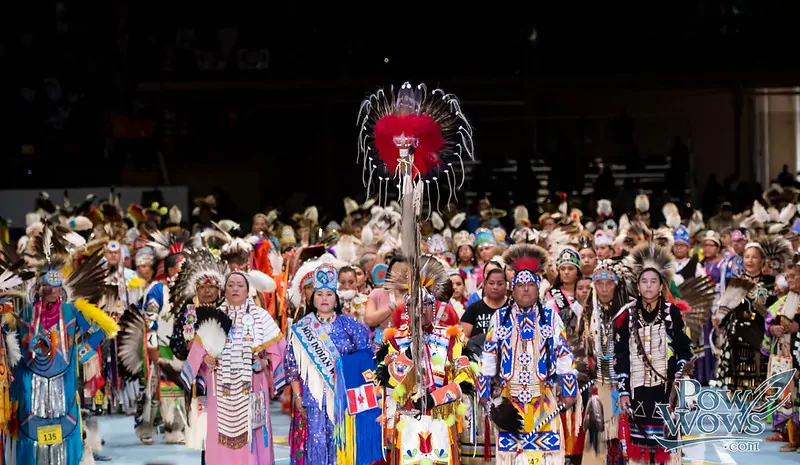
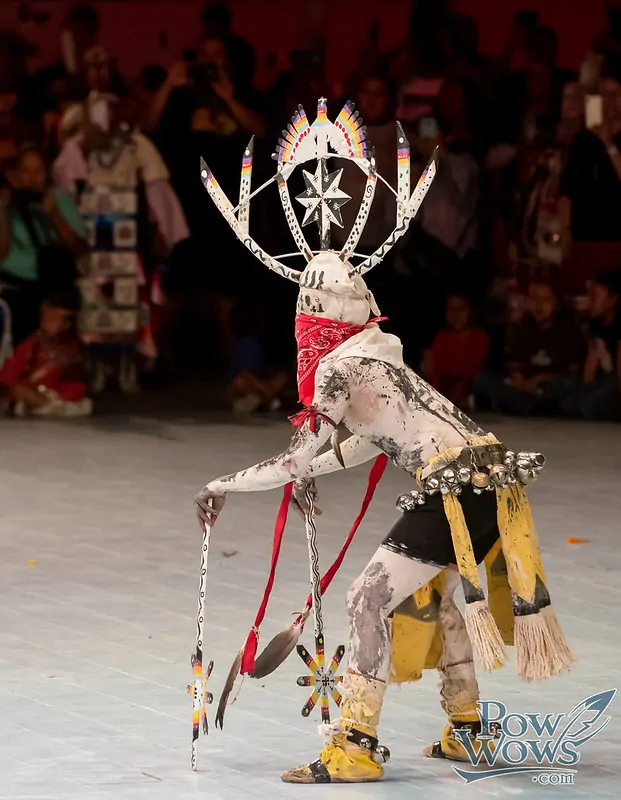
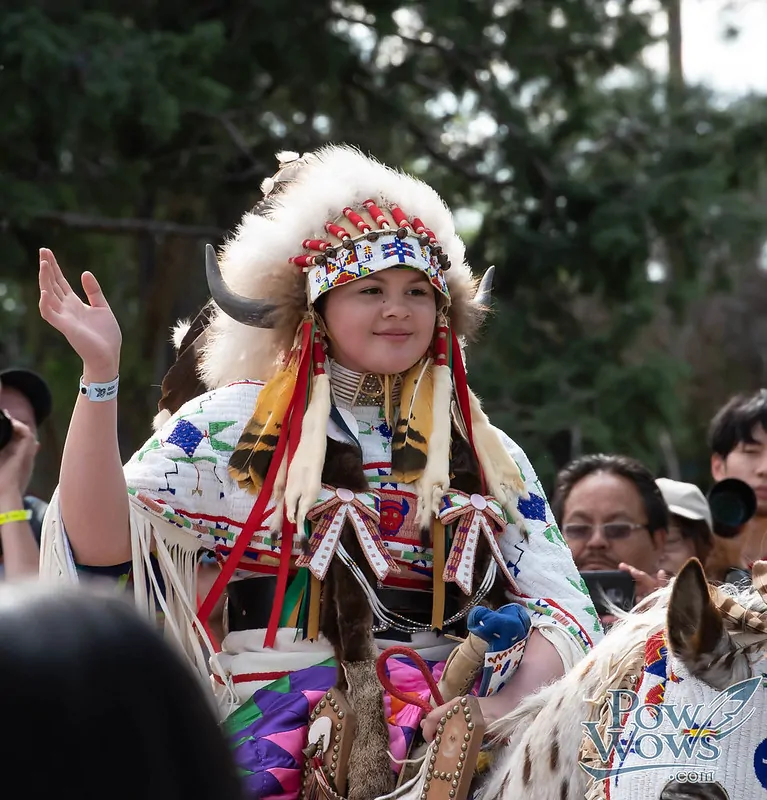
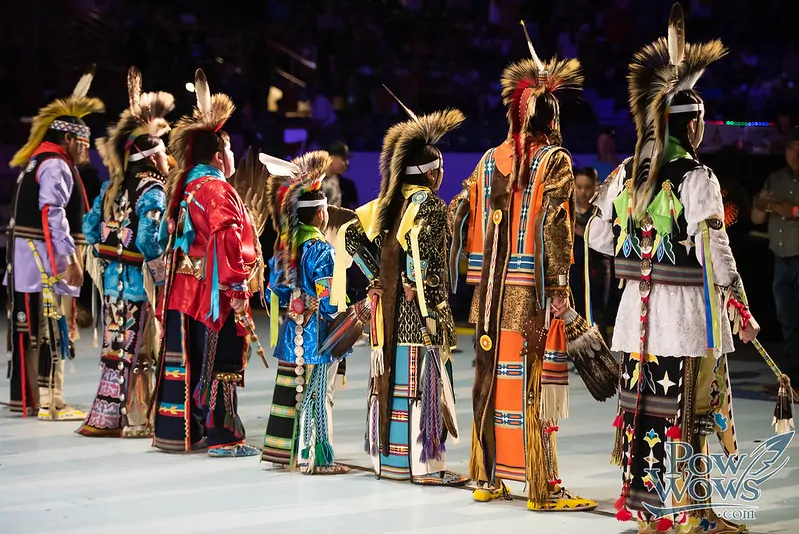
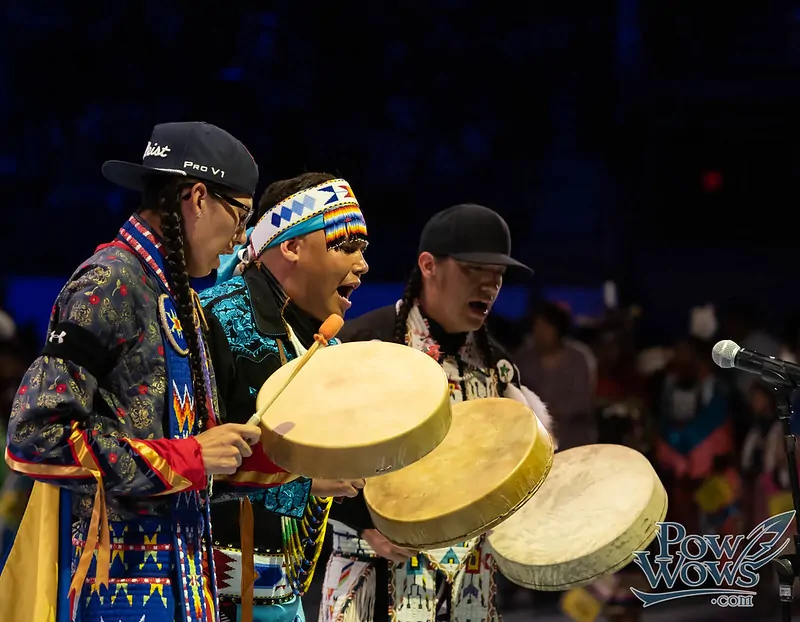
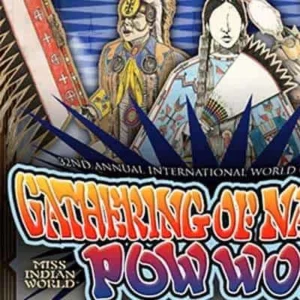
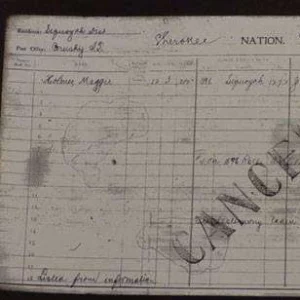
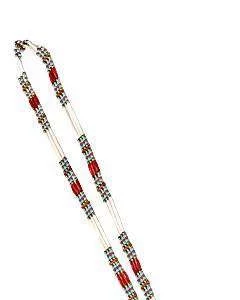
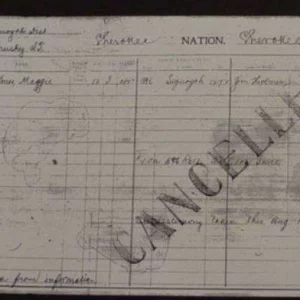
Ginger Renaker
says:I been told by my grandparents of my Cherokee ancestors. Not sure of % I am. My grandmother always said of all her grandchildren that I had the soul of the people. I am thankful for that. Would love to learn more about their culture and native medicines. More than what my grandmother taught me.I,m a retired nurse. Read all I can about all Native Peoples. Really enjoy the pow wows.
Tom Steers
says:There is so much more to learn…and learning brings respect…and respect brings honor.
And honor is due to the First Inhabitants…
Deanna Fitzgerald
says:Subsistence
On May 31, 2013, the Ahtna elder, matriarch and icon, passed away at the age of 97. Katie John was a long-time client of the Native American Rights Fund (NARF) who represented her in federal court litigation for nearly thirty years. The Katie John litigation, more than any other subsistence case exemplifies the contentious battle waged between federal, tribal and state interests over jurisdiction of Alaska Native subsistence fishing rights.
Katie John is an Ahtna Athabaskan Indian and the daughter of the last chief of Batzulnetas. She was born in 1915 near the present day community of Slana and lived with her family at the Native Village of Batzulnetas from the time of her birth until 1937. Batzulnetas, which means “Roasted Salmon Place,” is a historic upper Ahtna village and fish camp and is located at the confluence of Tanada Creek and Copper River within what is now the Wrangell-St. Elias National Park.
Batzulnetas is a revered spot among the upper Ahtna who have fiercely defended this site for generations. Oral history and early written accounts tell of a massacre of Russians by the upper Ahtna at Batzulnetas around 1794, provoked by the abduction of women and the Russians driving out the men in the winter without adequate clothing. In 1885, nearly one hundred years later, Lt. Henry T. Allen arrived in Batzulnetas. With the Ahtna’s help, he became the first non-Native explorer to cross one of the passes from the Copper River to the Tanana River in Alaska’s Interior.
Batzulnetas was occupied by the upper Ahtna on a year-round basis until the mid-1940s when the villages were relocated to Mentasta so that their children could attend school. The residents of Mentasta are nearly all from, or have their roots in, Batzulnetas. A few Batzulnetas people moved to Dot Lake, Northway and other communities in the late 1930s or 40s, but continued to participate in the salmon fishery at Batzulnetas through family, friends, or by personally returning there to fish.
Katie’s father was Sanford Charlie and her mother was named Sarah. The family and other Batzulnetas village members relied on the salmon for much of their food. Salmon was dried, boiled, fried, and sometimes roasted. It provided sustenance throughout the year.
Alaska became a state in 1959 and assumed management of fish and game in 1960. In 1964, the State closed down the subsistence fishery at Batzulnetas and nearly all other traditional fishing sites in the upper Copper River and its tributaries under the guise of conservation, although there was no documentation of any need to do so. Closure of Batzulnetas to subsistence fishing ended its regular use as a fish camp. Nevertheless, Katie John and other residents of Mentasta village and former Batzulnetas returned regularly to visit grave sites and to experience the spiritual and cultural satisfaction derived from being present where they grew up and where their ancestors made their home. Traditional fishing continued on a sporadic basis, albeit subject to harassment by state officials. Aboriginal fishing practices were protected under the federal law of aboriginal title, although those protections were ignored by the state. The Alaska Native Claims Settlement Act of 1971 ended any theoretical or formal protection of aboriginal subsistence uses, but in 1980 the subsistence Title of the Alaska National Interest Lands Conservation Act (ANILCA) was passed. That federal law was intended to protect customary subsistence uses by Alaska Natives and other rural residents.
In 1984, Katie John and another Ahtna elder, Doris Charles, submitted a proposal requesting that the Alaska State Board of Fisheries open Batzulnetas to subsistence fishing. Their request was denied, despite the fact that downstream users were permitted to take hundreds of thousands of salmon for sport and commercial uses. The Native American Rights Funds filed suit in 1985 under Title VIII of ANILCA, to compel the State to re-open the historic Batzulnetas fishery. Although the State subsequently adopted regulations providing for a limited fishery, in 1990, the federal district court set aside this regulation as too restrictive. Before the State Board could react, the Alaska Supreme Court’s McDowell v. State decision struck down the state’s “rural” priority as unconstitutional under the stage constitution. As a result of the McDowell case, fish and game management in Alaska was divided into two distinct legal regimes – one governed by state law and the other by federal law.
Initially, the Alaska Supreme Court put its McDowell decision on hold. The Court did this so the State would have time to amend its Constitution, or otherwise bring its program into compliance with ANILCA. But the Legislature failed to act, and the Secretaries of Interior and Agriculture announced their intent to take over management of subsistence uses on federal public lands effective July 1, 1990.
Unfortunately, this was not helpful to Katie John. Initially the federal government adopted regulations which extended federal management to game on federal public lands but excluded fishing in all navigable waters. NARF then filed suit on behalf of Katie John in federal court against the Secretary of the Interior, claiming that the Secretary had unlawfully restricted construction of ANILCA’s reach, and that Congress intended to protect subsistence fishing activities in navigable waters as well as game on the public lands. Katie John argued that ANILCA’s public lands definition applies to navigable waters because of the federal government’s navigational servitude, or under the federal reserved water rights doctrine. When President Clinton took office, Katie John and Doris Charles petitioned the federal government to change their legal position in the litigation, which did occur on a limited basis late in the district court case.
A number of other subsistence cases were also filed in the wake of McDowell and Judge Holland of the federal District Court decided to manage them jointly. One such case was State v. Babbitt, a case brought by the State of Alaska alleging that the Secretary of the Interior lacked the authority to manage federal lands even when the State was out of compliance with ANILCA. Judge Holland segregated out the claims of the subsistence cases that were being jointly managed, and decided to address first what became known as the “who” and “where” issues. The “who” issue referred to the question of whether the federal government or the state possessed authority to manage federal public lands and waters, and the “where” issue referred to ANILCA’s definition of “public lands” and whether that phrase included some or all navigable waters.
In March 30, 1994, federal Judge Holland ruled that, the Secretary of the Interior, not the State of Alaska, possesses the statutory authority under ANILCA to regulate public lands and waters when the State is not in compliance with ANILCA. The court further held that “for purposes of Title VIII of ANILCA, the United States holds title to an interest in all navigable waters.” He concluded that ANILCA’s subsistence fishing priority extends to all navigable waters in Alaska based on the navigational servitude doctrine. That doctrine holds that the federal government has a superior interest in the regulation of navigable waters and need not pay compensation for takings when the United States alters a water way for the purpose of regulation commerce. This power is so great, Judge Holland reasoned, that it is akin to a property interest and vests title to navigable waters in the federal government. The government’s title interest brings navigable waters squarely within the definition of public lands. Judge Holland did not reject the reserved waters theory as a basis for finding a federal title interest in navigable waters, but declined to apply because in his view, it would be difficult to administer and was likely more limited in scope.
The State and federal governments appealed this decision to the Ninth Circuit Court of Appeals, in 1995, but the State elected to drop that part of the appeal that dealt with the ‘who’ issue, i.e., the State’s challenge to Secretarial authority to manage fish and game. The only issue that went up on appeal was the “where” issue which turned on the definition of “public lands”. The United States had changed its legal position at the very close of the district court litigation to agree with Katie John’s secondary legal theory premised on the federal reserved rights doctrine.
The Ninth Circuit issued a more limited ruling than the district court. It rejected the broad theory that was based on the federal government’s navigational servitude and instead upheld Katie John’s claim based on the reserved waters doctrine. That doctrine holds that whenever the federal government withdraws lands from the public domain for a federal purpose, it implicitly reserves water necessary to accomplish the purposes of the reservation. The government’s reserved water interest has been held to be a property interest which can be reduced to title. The court concluded that because it was clear that Congress intended to protect subsistence fishing when withdrawing public lands in Alaska, ANILCA’s subsistence priority applies only to those navigable waters in which the United States owns so called “reserved water rights,” or about 50% of Alaskas inland waters.
Shortly after the Ninth Circuit issued its ruling, the Alaska Supreme Court addressed the same issue in the case Totemoff v. State. In that case the state was prosecuting a Native subsistence hunter for taking a deer with the use of a spot light. He defended arguing that the state lacked jurisdiction to prosecute since the offense took place in federal waters. The Alaska Court rejected his claim and specifically took issue with the Katie John ruling stating that it was not bound by decisions of federal courts other than the United States Supreme Court on questions of federal law. The State of Alaska immediately filed the Totemoff decision with the Ninth Circuit, urging it to reconsider its decision. The Ninth Circuit refused.
The State of Alaska then asked the United States Supreme Court to review the case but the Court refused and the case was remanded to the agencies, the Departments of Interior and Agriculture, for the purpose of adopting regulations to identify which waters in Alaska were federally reserved and thus fell within ANILCA’s priority. That was in 1996. Shortly thereafter, Senator Ted Stevens adopted a moratorium against publication of a final rule. He justified the moratorium as necessary to give the Alaska Legislature more time in which to adopt language for a constitutional amendment. The moratorium would expire within a year if the Legislature failed to act. Senator Stevens and Congress subsequently included three more moratoria in annual federal appropriations bills in the hope that the legislature would act. When the forth moratoria expired without legislative action, the regulations became final.
In January 1999 the federal government issued its regulations identifying the waters in Alaska which fall under federal management. Before the regulations became effective, the State of Alaska petitioned the Ninth Circuit Court of Appeals to hear the case en banc. The Court agreed to have 11 judges hear the State’s en banc appeal.
After briefing and oral argument, on May 7, 2001, the Court of Appeals reaffirmed its earlier ruling and stated that “the [1995] judgment rendered by the prior panel and adopted by the district court should not be disturbed or altered by the en banc court.” Three of the eleven judges wrote separately to express their view that they would have adopted the district court’s more expansive reasoning and extended the priority for subsistence fisheries to all navigable waters. Three other judges dissented and expressed their view that Title VIII’s federal subsistence protections do not extend to any navigable waters at all.
Governor Knowles initially had 60 days to seek review by the United States Supreme Court, but he requested a 60 day extension until October 4, so he could give the matter further consideration. During this period the Alaska Native community organized the Fourth “We The People March” on August 21 and used the event to generate public support for the Katie John decision and to urge Governor Knowles to forego any appeal to the United States Supreme Court (see pictures below).
On the morning of August 27, 2001, Governor Knowles called Katie John by telephone to tell her that “The State of Alaska will not appeal the Katie John case to the United States Supreme Court.” He went on to tell her “that from this time on, the State will do everything we can to protect your subsistence rights.” A few weeks before making his decision, Governor Knowles had traveled to Batzulnetas to meet personally with Katie John, then-86 years old. As they sat near the stream where Katie John’s father and mother subsistence fished to feed their family, Governor Knowles heard a simple but compelling message. “Katie John said she only wanted to protect her right to subsistence so she can raise and provide for her family the best way she knows how, in the way taught by her parents and earlier generations.”
Upon his return from his meeting with Katie John, Governor Knowles revealed “I learned more that day than is written in all the boxes of legal briefs in this long lasting court battle. I understand the strength, care and values that subsistence gives to Katie John’s family, and to the thousands of similar families from Metlakatla to Bethel, from Norvik to Ft. Yukon to Barrow. I know – we all know – that what Katie John does is not wrong. It is right – right for her, right for the village.” He acknowledged that the State of Alaska has not been protecting the basic right of rural Alaskans to provide for themselves and their families.
Shortly after Governor Knowles announced his decision, a lawsuit was filed by the Alaska Constitutional Legal Defense Conservation Fund in state court on September 13, 2001, seeking to enjoin the governor to carry the appeal forward. The case was heard by Judge Reese who entered an order on September 25. In that order Judge Reese stated that:
[S]eparation of powers precludes this court from ordering the Governor to take a position pending litigation, i.e. further appeal of the Katie John decision. It would be an inappropriate exercise of the equitable power of the court under Civ. Rule 65 to assume such a mandatory injunction, this is not an extreme or exceptional case. Litigation and political remedies are available to plaintiffs, and they have suffered no injury, nor is injury imminent. The Katie John litigation decisions of the Governor on behalf of the State of Alaska are political by nature, and are not subject to control by this court.
That decision was appealed and affirmed by the Alaska Supreme Court on September 27, 2001.
On October 4, 2001, the date in which the Governor’s petition to file before the Supreme Court was otherwise due, the Alaska State Legislature filed a petition for leave to intervene and a petition for a writ of certiorari to the United States Supreme Court to carry the appeal forward. That petition was denied.
Litigation did not stop there. On January 5, 2005, the State of Alaska filed a lawsuit in the U.S. District Court for the District of Columbia challenging the final rule implementing the Katie John mandate which established that the United States must protect subsistence uses of fisheries in navigable waters where the United States possesses a reserved water right. In the State’s new lawsuit, the State challenged the Federal agencies’ implementation of the mandate by arguing that the reserved waters doctrine requires a quantification of waters necessary to fulfill specific purposes.
On January 7, 2005, Katie John, again represented by NARF, filed a counter lawsuit in the U.S. District Court for the District of Alaska challenging the Federal Agencies’ Secretaries’ final rule implementing the prior Katie John mandate as being too restrictive in its scope. Katie John’s complaint alleged that the Federal agencies should have included Alaska Native allotments as public lands and further that the federal government’s interest in water extends upstream and downstream from the Conservation Units established under the Alaska National Interest Lands Conservation Act. The State of Alaska intervened and challenged the regulations as illegally extending federal jurisdiction to state waters. The cases were consolidated again before Judge Holland.
On September 9, 2009, the Court entered an order upholding the agencies’ final rule as reasonable. While rejecting Katie John’s claim that the agency had a duty to identify all of its federally reserved water rights in upstream and downstream waters, the court stated that the agency could do so at some future time if necessary to fulfill the purposes of the reserve. The case was appealed to the U.S. Court of Appeals for the Ninth Circuit and has been fully briefed. Argument took place on July 25, 2011 and a decision is expected any time. Various appeals will likely be brought by the parties and it could still be a number of years before a final decision is rendered.
With Katie John’s passing, her determination to protect and preserve the Alaska Native subsistence way of life will live on through her family, her children, her grandchildren and great-grandchildren. It has been an honor and privilege for all of us at NARF to have worked with such a great and wonderful matriarch. She is an inspiration to all Native peoples and to all people who believe in right and justice. Rest in peace, Katie, your legacy lives on.
Patricia Timbrook
says:I am 64 years young and learning about Native Amerindian culture. I have gone to PowWows in Washington. I have been able to see paddle boats
travel underneath the Tacoma Narrows Bridge going towards a Puyallup waterway. I have watched the video of a beautiful lady (from Alaska) dancing as a large bear in tall grass. It was so beautiful to watch .
I have more to learn about Amerindians and more to share with family, friends and others.
Thank you for all your stories and info. I have received.